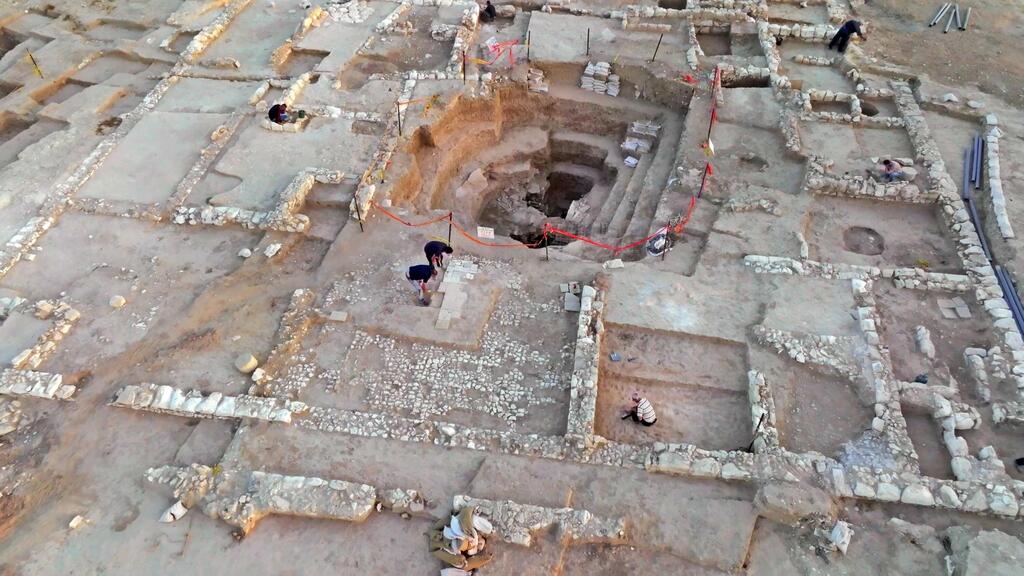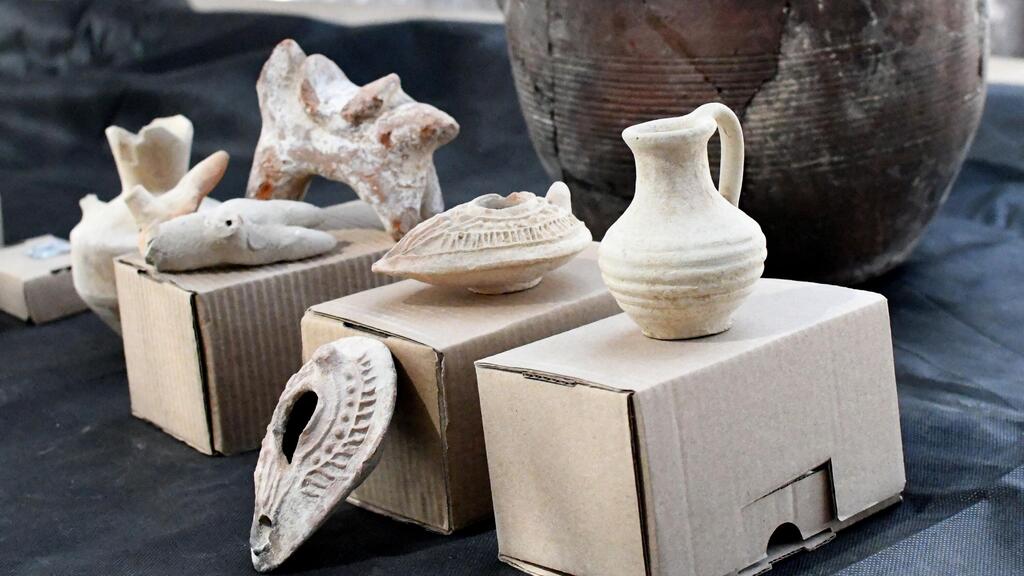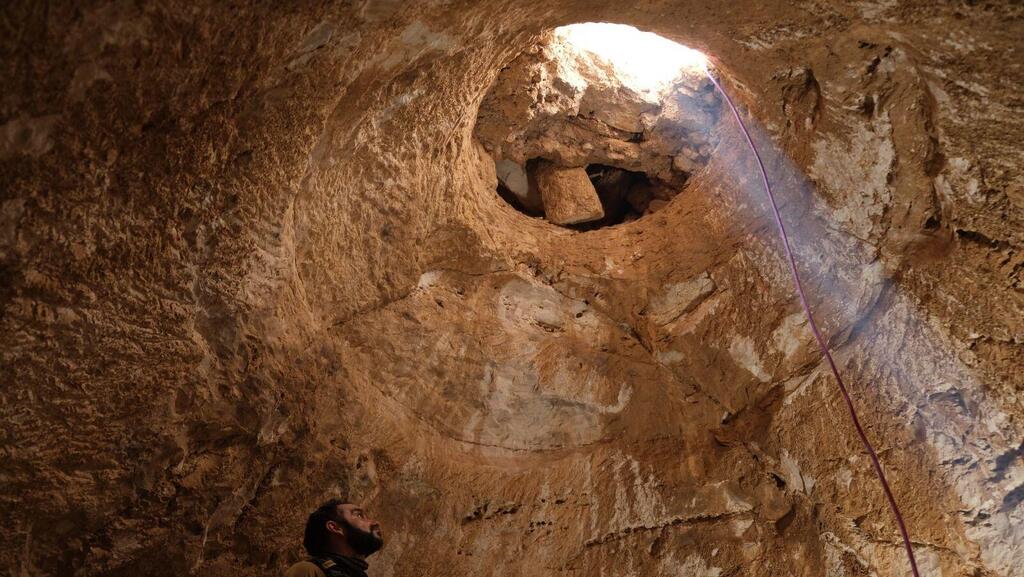Israeli archeologists have uncovered a 1,200-year-old mansion in the Negev, the Antiquities Authority said Tuesday. The discovery is the first of its kind to be unearthed.
The luxury property was located near the Bedouin city of Rahat, as part of soil examination done to approve the expansion of the city.
3 View gallery


The 1,200-year-old mansion uncovered near Rahat
(Photo: Emil Aljam, Israeli Antiquities Authority)
In the courtyard area, about 5.5 meters deep (18 feet) in the ground, the archaeologists discovered a vault - a self-supporting arched form, usually of stone or brick, serving to cover a space with a ceiling or roof - under which a well was carved into a rock, more than 3 meters (10 feet) deep.
According to the IAA, the building was split into four areas with rooms, each serving a different purpose.
In one section of the mansion, a hall paved with marble and stone was discovered, and the walls were decorated with murals. What was left from the frescos were small fragments of ornaments in varying colors, such as red, yellow, blue, and black.
Other rooms in the building were paved with plaster sand, where very large ovens, which were likely used for cooking, were found. Among the findings were also fragments of exquisite and luxurious serving utensils made of glass.
"This is a unique discovery that we are not familiar with," excavation supervisors Oren Shmueli, Dr. Elena Cogan Zahavi and Dr. Noah David Michae, said in a statement.
"We were surprised to find at a 5.5-meter depth beneath the courtyard a system of stone vaults, which were 2.5 meters (8 feet) tall. The vaults were carefully constructed and were apparently led to other underground systems that had not yet been excavated. The biggest surprise of all was the discovery of an opening under the vaults, which led to a deep rock-carved water well."
The IAA said the underground stone vaults seemed to have been designed for support, allowing the people to walk safely underground, store food, stay cool during hot days and drink cold water from the well. Evidence of such activity were the pieces of clay candles, which were used to light the underground compound.
3 View gallery


Other findings uncovered at the mansion
(Photo: Emil Aljam, Israeli Antiquities Authority)
"The exquisite estate and the unique impressive vaults suggest the people living in it were very wealthy. Their high status and economic prosperity allowed them to build a magnificent building that was used for housing and hospitality. It helps us learn about building methods, architectural styles and the day-to-day life in the Negev, at the beginning of the Islamic in Israel," the excavation supervisors said.
Director of the IAA Eli Ascosido said: "the excavation of Rahat is a product of close cooperation between the IAA and the Negev Bedouin Development and Settlement Authority."
"The magnificent mansion was discovered between two mosques that were uncovered in the area and are among the oldest in the world. The IAA and the Bedouin authority in cooperation with Rahat, are currently working on a plan to preserve development and present these findings to the general public."
On Thursday the excavation site will be open to the public.


